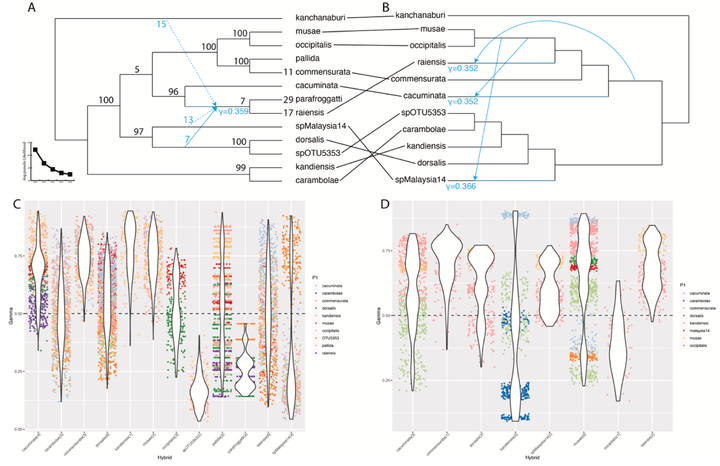Interspecific gene flow obscures phylogenetic relationships in an important insect pest species complex
 Image credit: M. San Jose
Image credit: M. San JoseAbstract
As genomic data proliferates, the prevalence of post-speciation gene flow is making species boundaries and relationships increasingly ambiguous. Although current approaches inferring fully bifurcating phylogenies based on concatenated datasets provide simple and robust answers to many species relationships, they may be inac- curate because the models ignore inter-specific gene flow and incomplete lineage sorting. To examine the po- tential error resulting from ignoring gene flow, we generated both a RAD-seq and a 500 protein-coding loci highly multiplexed amplicon (HiMAP) dataset for a monophyletic group of 12 species defined as the Bactrocera dorsalis sensu lato clade. With some of the world’s worst agricultural pests, the taxonomy of the B. dorsalis s.l. clade is important for trade and quarantines. However, taxonomic confusion confounds resolution due to intra- and interspecific phenotypic variation and convergence, mitochondrial introgression across half of the species, and viable hybrids. We compared the topological convergence of our datasets using concatenated phylogenetic and various multispecies coalescent approaches, some of which account for gene flow. All analyses agreed on species delimitation, but there was incongruence between species relationships. Under concatenation, both datasets suggest identical species relationships with mostly high statistical support. However, multispecies coalescent and multispecies network approaches suggest markedly different hypotheses and detected significant gene flow. We suggest that the network approaches are likely more accurate because gene flow violates the assumptions of the concatenated phylogenetic analyses, but the data-reductive requirements of network ap- proaches resulted in reduced statistical support and could not unambiguously resolve gene flow directions. Our study highlights the importance of testing for gene flow, particularly with phylogenomic datasets, even when concatenated approaches receive high statistical support.